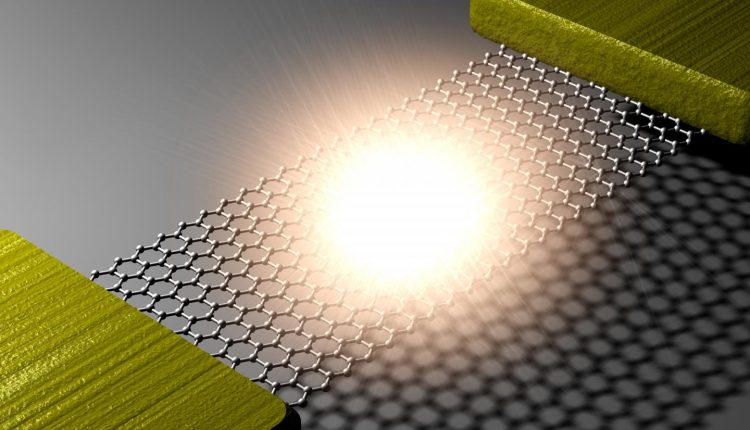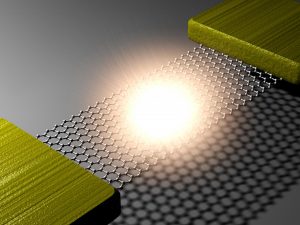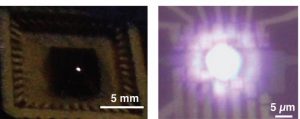
Researchers Create The World’s Thinnest Light Bulb Using Graphene
Thanks to collaboration between Columbia University, Seoul National University, and Korea Research Institute of Standards and Science the thinnest light bulb was created.
The researchers demonstrated an on-chip visible light source using graphene, an atomically thin and perfectly crystalline form of carbon, as a filament. They attached small strips of graphene to metal electrodes, suspended the strips above the substrate, and passed a current through the filaments to cause them to heat up.

“We’ve created what is essentially the world’s thinnest light bulb,” said Hone, Wang Fon-Jen Professor of Mechanical Engineering at Columbia Engineering. “This new type of ‘broadband’ light emitter can be integrated into chips and will pave the way towards the realization of atomically thin, flexible, and transparent displays, and graphene-based on-chip optical communications.”
The teams have been looking for a way to create light in small structures on the surface of a chip in order to develop fully integrated ‘photonic’ circuits that do with light what is now done with electric currents in semiconductor integrated circuits.
Researchers have developed many approaches, but have not yet been able to get an incandescent light bulb onto a chip mostly because light bulb filaments must be extremely hot (thousands of degrees Celsius) in order to glow in the visible range and micro-scale metal wires cannot withstand such temperatures. In addition, heat transfer from the hot filament to its surroundings is extremely efficient at the microscale which makes such structures impractical and leads to damage of the surrounding chip.
How they did it
By measuring the spectrum of the light emitted from the graphene the team was able to demonstrate that the graphene was reaching temperatures of above 2,500 degrees Celsius, hot enough to glow brightly.
“The visible light from atomically thin graphene is so intense that it is visible even to the naked eye, without any additional magnification,” said Young Duck Kim, postdoctoral research scientist who works in Hone’s group at Columbia Engineering.
The spectrum of the emitted light showed peaks at specific wavelengths due to interference between the light emitted directly from the graphene and light reflecting off the silicon substrate and passing back through the graphene.
According to the team members, this was only possible because graphene is transparent unlike any conventional filament and allowed them to tune the emission spectrum by changing the distance to the substrate.
Another property that helped: as graphene heats up it becomes a much poorer conductor of heat which means that the high temperatures stay confined to a small ‘hot spot’ in the center.

“At the highest temperatures the electron temperature is much higher than that of acoustic vibrational modes of the graphene lattice, so that less energy is needed to attain temperatures needed for visible light emission,” said Myung-Ho Bae, a senior researcher at KRISS. “These unique thermal properties allow us to heat the suspended graphene up to half of temperature of the sun, and improve efficiency 1000 times, as compared to graphene on a solid substrate.”
Cool fact: The team was actually working with the same material that Thomas Edison used when he invented the incandescent light bulb.
According the researchers, “Edison originally used carbon as a filament for his light bulb and here we are going back to the same element, but using it in its pure form — graphene – and at its ultimate size limit of one atom thick.”
The group is currently working to further characterize the performance of these devices. For example, how fast they can be turned on and off to create ‘bits’ for optical communications – and to develop techniques for integrating them into flexible substrates.
Potential applications include creating micro-hotplates that can be heated to thousands of degrees in a fraction of a second to study high-temperature chemical reactions.
The study, ‘Bright visible light emission from graphene,’ is published in the Advance Online Publication (AOP) on Nature Nanotechnology‘s website on June 15.
